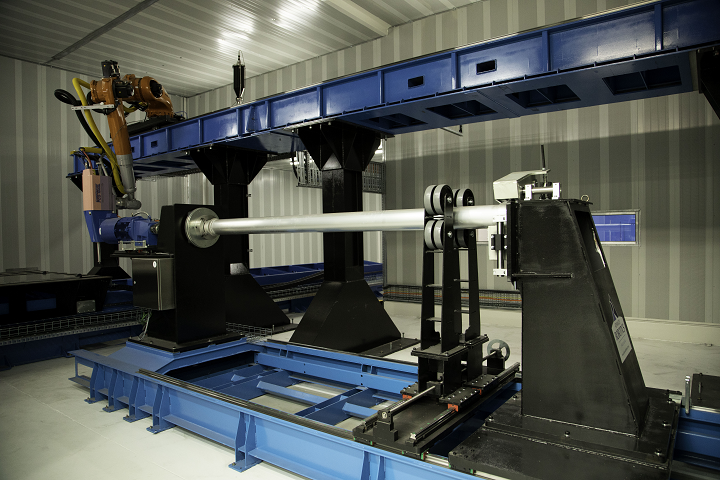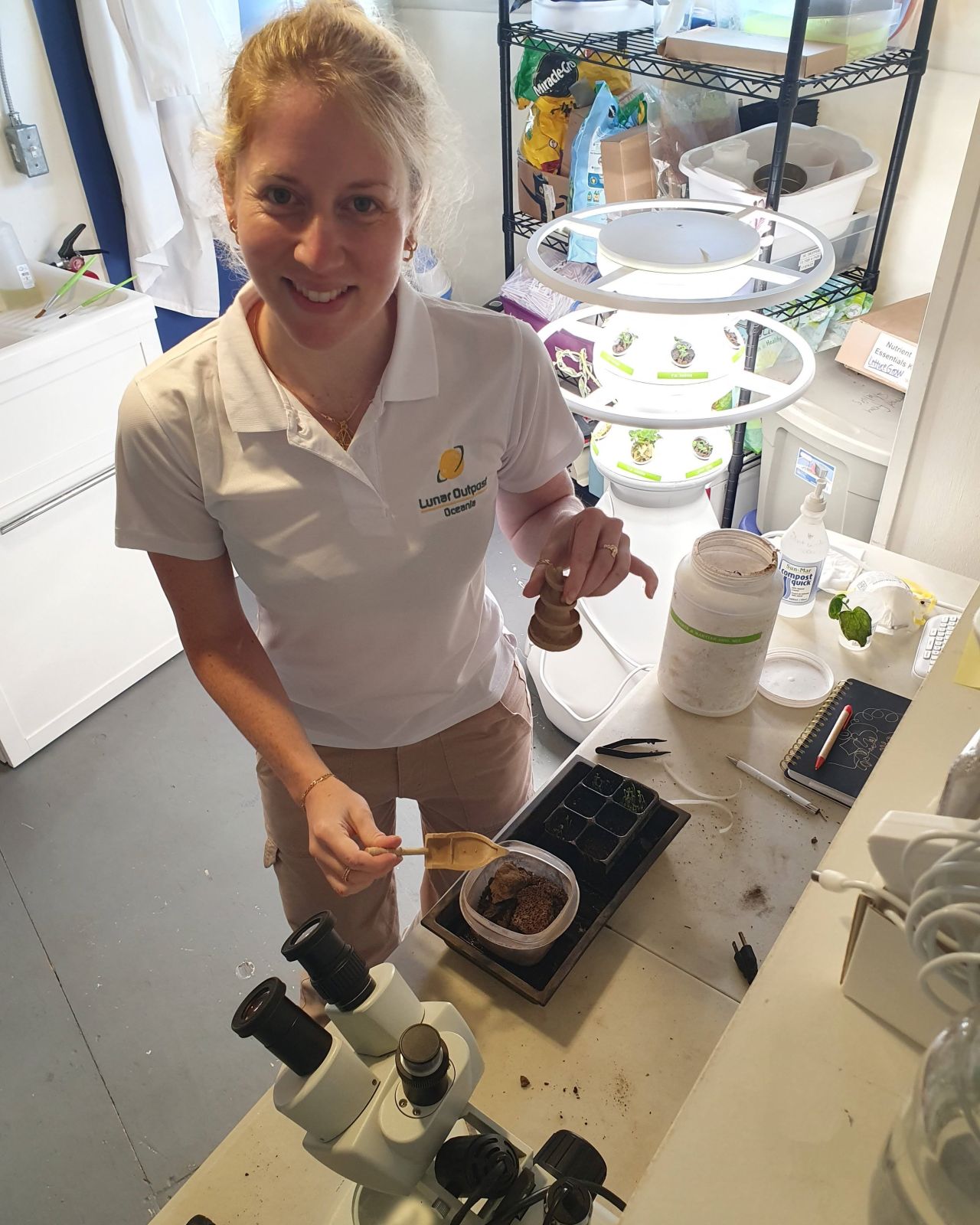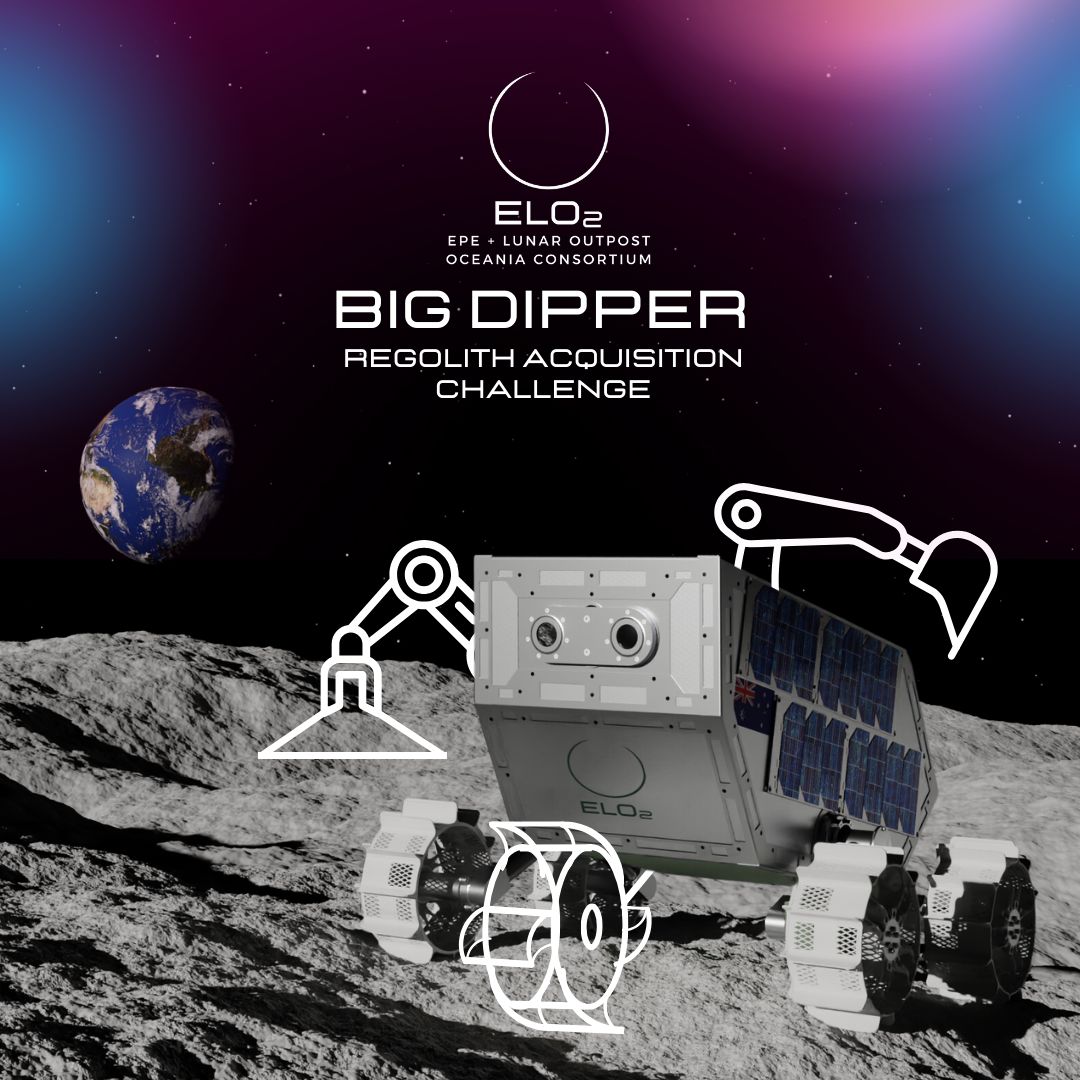One of Australia’s two competing teams in the race to build a lunar rover has unveiled a first prototype. Dubbed the “Roo-ver,” this rover has been designed for a future Artemis mission with NASA, marking a new chapter in space exploration for Australia. This early prototype, which leverages 3D printing, was unveiled during the 16th Australian Space Forum in Sydney on December 6, 2023.
Two Australian industry consortiums, ELO2 and the Australian Remote Operations for Space and Earth (AROSE), are at the forefront of Australia’s ambitious journey to the Moon. Both teams have worked on early-stage concepts for a lunar rover in the Australian Space Agency‘s (ASA) $50 million Moon to Mars Trailblazer program. In this initial program phase, each consortium received $4 million to develop a rover prototype. ELO2 recently unveiled its rover prototype, marking its first significant milestone.
Moon rover revealed
A collaborative effort involving a mix of Australian industries, space startups, big companies, universities, and research partners is the backbone of this rover prototype. This multi-disciplinary coalition is key to the complexity and innovation required in space exploration.
Developed by ELO2, this prototype represents a major leap toward engaging the Australian public in the nation’s space exploration journey, inviting their input, feedback, and creative ideas. Slated for operation by 2026, the rover is critical for the Trailblazer mission, which involves remotely collecting lunar soil and delivering it to NASA’s processing unit on the Moon.
This initiative, aimed at extracting oxygen from the lunar regolith, is crucial for supporting a sustainable human presence on the Moon and future Mars missions. As a significant component of the Moon to Mars initiative, the Trailblazer program contributes to a broader $150 million investment over five years to enhance Australia’s space sector. If selected for the Trailblazer mission, Roo-ver will play a crucial role in transporting lunar regolith to a NASA facility at the lunar south pole for oxygen extraction in the next decade. The prototype’s design, engineered specifically to overcome the Moon’s challenging terrain, tests chassis and suspension subsystems and introduces a specialized collection device and wheels.

ELO2 Moon Rover Prototype unveiled at the Andy Thomas Space Foundation forum in Sydney. Image courtesy of ELO2.
Printed for space
A crucial aspect of the Roo-ver project is its innovative use of 3D printing, which has significantly contributed to the rover’s development, with Titomic playing a pivotal role. This Brisbane-based metal additive manufacturing company, part of the ELO2 project, brings its unique Cold Spray process known as “Titomic’s Kinetic Fusion Additive Manufacturing” (TKF AM) to the forefront. This advanced technique enables the production of high-performance parts and on-demand coatings or repairs, making it ideal for the aerospace, automotive, defense, and mining industries. Recognizing its potential, ASA has granted Titomic funding to manufacture parts for spacecraft.
The Royal Melbourne Institute of Technology (RMIT) University was also one of the leading contributors to the development of the ELO2 lunar rover. The university supports technical design and precision manufacturing using metal 3D printing, with Associate Professor at the School of Engineering Martin Leary leading the research. An expert in 3D printing research at RMIT, Leary highlights the university’s strengths in advanced manufacturing and 3D printing, stating, “Connecting our research capabilities to industry-based opportunities for impact is part of what RMIT strives to do and does well.”

Kinetic Fusion process involves a 6 axis robot arm spraying titanium powder particles onto a scaffold at supersonic speeds. Image courtesy of Titomic.
Moon mission blueprint
The Roo-ver is expected to be a compact yet robust machine, weighing around 20 kilograms and roughly the size of a standard airport suitcase. Its primary function will be to collect lunar soil, known as regolith, and transport it to a NASA facility for scientific experiments, including attempts to extract oxygen. This capability is crucial for establishing a sustainable human presence on the Moon, as oxygen is essential for life support and rocket fuel. The rover’s design focuses on autonomy and efficiency, reflecting Australia’s leading position in remote operations.
However, the country’s contribution to NASA’s Artemis missions goes beyond the development of the Roo-ver. The country also provides critical communications and technology services to support these missions. Through the Moon to Mars initiative, Australian companies are developing technologies and services to assist NASA in achieving its objectives for lunar and Martian exploration.
The unveiling of the Roo-ver prototype is not just a milestone for the consortiums involved but also an invitation to the Australian public to engage with the nation’s space endeavors. Initiatives like the nationwide competition to name the lunar rover exemplify this inclusive approach. In a unique engagement with the public, the name “Roo-ver” was chosen for the lunar rover through a nationwide competition that attracted over 8,000 entries. The winning name, entered by someone called Siwa from New South Wales, captures the Australian spirit and is symbolic of the country’s leap into space exploration.
“Our lunar rover deserves to be named after something iconically Australian, reflecting the Aussie spirit as we launch into this new endeavor,” explains Siwa. “A kangaroo is part of the Australian Coat of Arms, and it’s time for Australian science to take the next leap all the way up into space.” The kangaroo, an iconic Australian symbol and part of the national Coat of Arms, now lends its name to this historic endeavor.
Community’s voice
Further encouraging public involvement, other initiatives such as the Big Dipper and Little Dipper Challenges have been introduced. These challenges invite people of all ages to contribute creatively to the rover project. The Big Dipper Challenge allows participants to propose designs for the regolith collection device, a critical component of the rover for lunar soil collection. Meanwhile, the Little Dipper Challenge, targeting younger enthusiasts, offers a platform for children to engage with space technology and innovation. Both challenges encourage a sense of collective achievement and national pride, allowing the Australian community to shape their country’s journey to the Moon actively.
In fact, these initiatives have already sparked significant interest and involvement. Space tech company Lunar Outpost Oceania’s Lauren Fell recently returned from a two-week term at the HI-SEAS (Hawaii Space Exploration Analog & Simulation) habitat, an experience designed to simulate life on the Moon and Mars. In line with the spirit of the ELO2 Big Dipper Challenge, Lauren tested various 3D printed designs of regolith scoops, including those created using AI modeling, to collect lunar soil. Notably, the AI models did not perform as well as expected, highlighting the importance and value of human innovation in the Big Dipper Challenge. This challenge, open until December 18, invites participants to experience this thrilling mission. The Little Dipper Challenge also welcomes entries, providing young space explorers with a unique opportunity to engage with space technology and innovation.

Lunar Outpost Oceania’s Lauren Fell tested 3D printed designs as part of the ELO2 Big Dipper Challenge. Image courtesy of ELO2.
Australia’s journey into space exploration takes a significant leap forward with the unveiling the Roo-ver prototype, highlighting the collaborative strengths of Titomic, RMIT University, and the ELO2 consortium. If chosen for the Trailblazer mission, Roo-ver will be pivotal in transporting lunar regolith for NASA. Furthermore, Titomic’s involvement in developing and manufacturing specific components will be instrumental, should Roo-ver be selected, highlighting Australia’s expanding role in space technology and exploration.
Subscribe to Our Email Newsletter
Stay up-to-date on all the latest news from the 3D printing industry and receive information and offers from third party vendors.
You May Also Like
3D Printing Webinar and Event Roundup: April 21, 2024
It’s another busy week of webinars and events, starting with Hannover Messe in Germany and continuing with Metalcasting Congress, Chinaplas, TechBlick’s Innovation Festival, and more. Stratasys continues its advanced training...
3D Printing Webinar and Event Roundup: April 14, 2024
We’re starting off the week’s 3D printing webinars and events at ASTM AMCOE’s 11th Snapshot Workshop and MACH Exhibition. Stratasys continues its advanced training courses, SME is holding a virtual...
Polly the Duck to Receive 3D Printed Bill Prosthetic
In Williamson County, Texas, a story of resilience, innovation, and cross-community effort is unfolding, illustrating the bond between humans and wildlife. All Things Wild, a wildlife rehabilitation center, has been...
3D Printing News Briefs, April 3, 2024: Kickstarter FDM 3D Printer, Artificial Eyes, & More
In 3D Printing News Briefs today, we’re talking about an FDM 3D printer on Kickstarter, advancements in artificial eye creation, and 3D printed solenoids for electromagnets. Then we’ll move on...

































